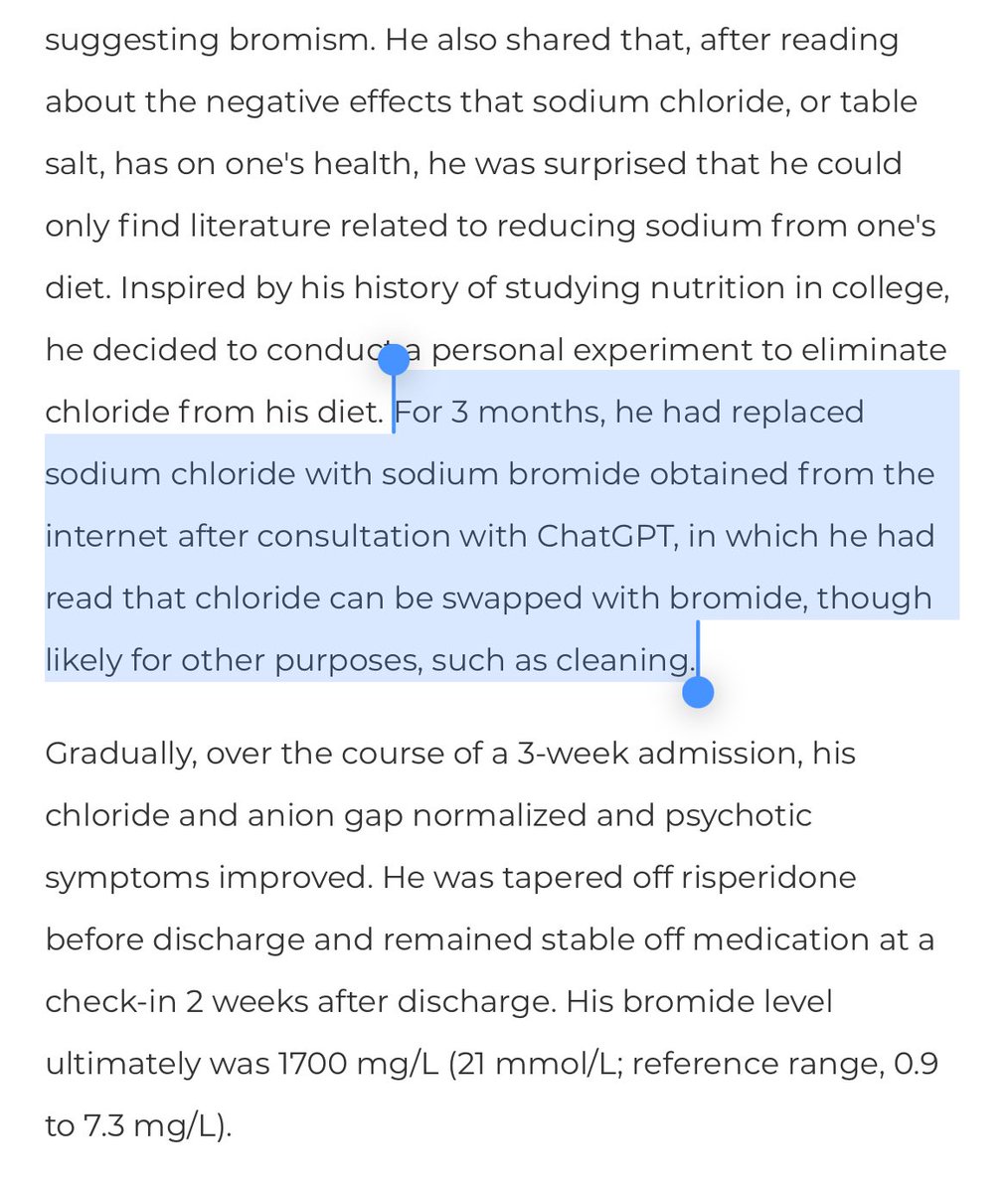At long last, here is part 5️⃣ in my animal #physiology in the ICU series #FOAMed
Case 1: You are called about a very high blood glucose (BG) value: 738 mg/dL (41 mM)!
The RN asks if you want to start an insulin drip. You say no, it’s totally normal because the patient is a:
1/
Case 1: You are called about a very high blood glucose (BG) value: 738 mg/dL (41 mM)!
The RN asks if you want to start an insulin drip. You say no, it’s totally normal because the patient is a:
1/
Answer: Hummingbird
Part of it's adaptation to energy intensive activities (flying, hovering) the Hummingbird maintains a very high blood glucose:
Fasting: >300 mg/dL
Fed: >700 mg/dL
That's right - a fasting hummingbird has a higher blood glucose than almost any fed mammal!
2/


Part of it's adaptation to energy intensive activities (flying, hovering) the Hummingbird maintains a very high blood glucose:
Fasting: >300 mg/dL
Fed: >700 mg/dL
That's right - a fasting hummingbird has a higher blood glucose than almost any fed mammal!
2/



The wrong answers: 🐑
A sheep’s normal blood glucose is 25-50 mg/dL! (among the lowest of all mammals!)
A sheep with a fasting blood glucose of 90 mg/dl would likely be diabetic!
publish.csiro.au/cp/AR9500182
3/
A sheep’s normal blood glucose is 25-50 mg/dL! (among the lowest of all mammals!)
A sheep with a fasting blood glucose of 90 mg/dl would likely be diabetic!
publish.csiro.au/cp/AR9500182
3/

Nectivarous bats do indeed have very high blood glucose: up to ~540 mg/dL (30 mMol). High, but not quite as high as the hummingbird
Like the hummingbird this reflects the 🦇's high sugar diet (nectivarous = sugary) & a high energy needs in order to fly
ncbi.nlm.nih.gov/pmc/articles/P…
4/
Like the hummingbird this reflects the 🦇's high sugar diet (nectivarous = sugary) & a high energy needs in order to fly
ncbi.nlm.nih.gov/pmc/articles/P…
4/
Case 2:
Now that you are an expert in comparative blood glucose (BG) levels in different vertebrates, which animal do you think has the highest hemoglobin A1c (glycolated hemoglobin)?
(I've included some BG values as a reference)
5/
Now that you are an expert in comparative blood glucose (BG) levels in different vertebrates, which animal do you think has the highest hemoglobin A1c (glycolated hemoglobin)?
(I've included some BG values as a reference)
5/
Answer: 🐪 Camel
Despite blood glucose levels that are similar to humans, camels have significantly higher glycolated hemoglobin (HbA1c). pubmed.ncbi.nlm.nih.gov/3568621/
Average human A1c 4.9%
Average camel A1c 5.5%
Why? We need to understand what HbA1c is...
6/

Despite blood glucose levels that are similar to humans, camels have significantly higher glycolated hemoglobin (HbA1c). pubmed.ncbi.nlm.nih.gov/3568621/
Average human A1c 4.9%
Average camel A1c 5.5%
Why? We need to understand what HbA1c is...
6/


Glucose reacts spontaneously with amines on hemoglobin to form a hemoglobin adduct: HbA1c.
(This process is called non-enzymatic glycosylation btw)
The amount of HbA1c reflects two factors:
-how much glucose is present (average BG)
-how long RBCs last (RBC lifespan)
7/
(This process is called non-enzymatic glycosylation btw)
The amount of HbA1c reflects two factors:
-how much glucose is present (average BG)
-how long RBCs last (RBC lifespan)
7/

Camels have *higher* HbA1c than us because their RBC lifespan is longer, presumably an adaptation to extreme dehydration. (Their RBCs are also elliptocytes)
Human RBCs last 100-120 days
Camel RBCs last up to 150 days
That's why a camel's HbA1c is higher than ours!
8/

Human RBCs last 100-120 days
Camel RBCs last up to 150 days
That's why a camel's HbA1c is higher than ours!
8/


Amazingly, the hummingbird has a fed BG of >700 mg/dL but a hemoglobin A1c that's lower than most humans (3.8%)!
In fact, most birds' HbA1c is <3%! The duck’s A1c is <1%
The reason is that birds have shorter RBC lifespans than humans: just 30-40 days. Hence a lower HbA1c!
9/

In fact, most birds' HbA1c is <3%! The duck’s A1c is <1%
The reason is that birds have shorter RBC lifespans than humans: just 30-40 days. Hence a lower HbA1c!
9/


Clinical🥡
Like a hummingbird, people with increased RBC turn-over (e.g. hemolysis) can have low HbA1c despite elevated BG.
Be cautious if you see a sudden drop in HbA1c - it may represent either:
-a decrease in average BG *OR*
-a shorter RBC lifespan
ncbi.nlm.nih.gov/pmc/articles/P…
10/
Like a hummingbird, people with increased RBC turn-over (e.g. hemolysis) can have low HbA1c despite elevated BG.
Be cautious if you see a sudden drop in HbA1c - it may represent either:
-a decrease in average BG *OR*
-a shorter RBC lifespan
ncbi.nlm.nih.gov/pmc/articles/P…
10/

Case #3:
The neuro-ICU calls about an abnormal EEG.
It shows slow waves consistent w/ sleep on the LEFT side & signs of wakefulness on the RIGHT!
The LEFT eye is open & tracks, the RIGHT is closed
You reassure them. This is normal.
In what situation would this ABNORMAL?
11/
The neuro-ICU calls about an abnormal EEG.
It shows slow waves consistent w/ sleep on the LEFT side & signs of wakefulness on the RIGHT!
The LEFT eye is open & tracks, the RIGHT is closed
You reassure them. This is normal.
In what situation would this ABNORMAL?
11/
Answer: humans* (I’ll explain the * later..)
Cetaceans & birds evolved unihemispheric slow wave sleep (USWS); literally half the 🧠 sleeps at a time!
Example: alternating slow wave sleep in Beluga 🐋 & 🐬. The L & R hemispheres “take turns” sleeping.
citeseerx.ist.psu.edu/viewdoc/downlo…
12/
Cetaceans & birds evolved unihemispheric slow wave sleep (USWS); literally half the 🧠 sleeps at a time!
Example: alternating slow wave sleep in Beluga 🐋 & 🐬. The L & R hemispheres “take turns” sleeping.
citeseerx.ist.psu.edu/viewdoc/downlo…
12/

Why the heck do they do this?
For cetaceans 🐳 unihemispheric slow wave sleep (USWS) enables them to remain awake enough to swim slowly and periodically surface to breath. (Pretty important stuff IMO)
Like us 🐬 sleep ~8 hours a day, but with only half their 🧠 at a time!
13/
For cetaceans 🐳 unihemispheric slow wave sleep (USWS) enables them to remain awake enough to swim slowly and periodically surface to breath. (Pretty important stuff IMO)
Like us 🐬 sleep ~8 hours a day, but with only half their 🧠 at a time!
13/

Frigatebirds also sleep with half their 🧠 while crossing oceans.
To sleep, they go into shallow turns with the sleeping hemisphere down, so the awake side of the 🧠 can keep monitoring the environment. Then they switch 🧠 sides & turn the other way.
nature.com/articles/ncomm…
14/


To sleep, they go into shallow turns with the sleeping hemisphere down, so the awake side of the 🧠 can keep monitoring the environment. Then they switch 🧠 sides & turn the other way.
nature.com/articles/ncomm…
14/



Other birds use unihemispheric sleep as an anti-predation strategy
When groups of ducks sleep on a log, the🦆s on the ends use unihemispheric sleep to maintain outward vigilance
In the wild they swap positions, so each duck & 🧠 hemisphere gets sleep!
sciencedirect.com/science/articl…
15/



When groups of ducks sleep on a log, the🦆s on the ends use unihemispheric sleep to maintain outward vigilance
In the wild they swap positions, so each duck & 🧠 hemisphere gets sleep!
sciencedirect.com/science/articl…
15/




While humans don’t have USWS, we have something called the first night effect (FNE) where the depth of sleep is discrepant between 🧠 hemispheres when in an unfamiliar place.
Presumably like🦆s sleeping with one eye open, this is a defense mechanism
scientificamerican.com/article/sleepi…
16/
Presumably like🦆s sleeping with one eye open, this is a defense mechanism
scientificamerican.com/article/sleepi…
16/

And in what unfamiliar place do people sleep especially poorly? the ICU!
Just look how disrupted the sleep is for these 5 patients in the ICU.
pubmed.ncbi.nlm.nih.gov/11179121/
17/
Just look how disrupted the sleep is for these 5 patients in the ICU.
pubmed.ncbi.nlm.nih.gov/11179121/
17/

Interestingly, ICU patients exhibit discrepant sleep depth in each hemisphere & it's associated with failing SBTs!
Could an “attenuated form" of unihemispheric sleep contribute to worse ICU outcomes? Stay tuned; we need more research!
ncbi.nlm.nih.gov/pmc/articles/P…
18/

Could an “attenuated form" of unihemispheric sleep contribute to worse ICU outcomes? Stay tuned; we need more research!
ncbi.nlm.nih.gov/pmc/articles/P…
18/


Clinical 🥡:
People in the ICU have sleep disruption due to FNE & maybe even an attenuated form of USWS!
RCTs have shown that a very simple intervention - ear plugs - can improve ICU sleep quality & reduce delirium (maybe even prevent mortality too!)
pubmed.ncbi.nlm.nih.gov/26741578/
19/
People in the ICU have sleep disruption due to FNE & maybe even an attenuated form of USWS!
RCTs have shown that a very simple intervention - ear plugs - can improve ICU sleep quality & reduce delirium (maybe even prevent mortality too!)
pubmed.ncbi.nlm.nih.gov/26741578/
19/
In part 5️⃣ of this physiology 🧵we learned:
-What animals have the highest & lowest blood glucose & the relationship between HbA1c & RBC lifespan
-How birds/cetaceans sleep w/ 1/2 their 🧠. People have a similar pattern of abnormal 🧠 activity & disrupted sleep in the ICU
20/
-What animals have the highest & lowest blood glucose & the relationship between HbA1c & RBC lifespan
-How birds/cetaceans sleep w/ 1/2 their 🧠. People have a similar pattern of abnormal 🧠 activity & disrupted sleep in the ICU
20/
Hope you enjoyed part 5️⃣, you may also like the prior #tweetorials in this series. Highlights: how 🦒&🦕 regulate BP, why 🐘 can't get PTX, & how a 🐢 has a lactate >200
1️⃣
2️⃣
3️⃣
4️⃣
21/21
1️⃣
https://twitter.com/nickmmark/status/1346589425938010112?s=20
2️⃣
https://twitter.com/nickmmark/status/1352335092350238721?s=20
3️⃣
https://twitter.com/nickmmark/status/1434137938183344129?s=20
4️⃣
https://twitter.com/nickmmark/status/1439666320774090752
21/21
• • •
Missing some Tweet in this thread? You can try to
force a refresh
































